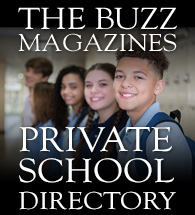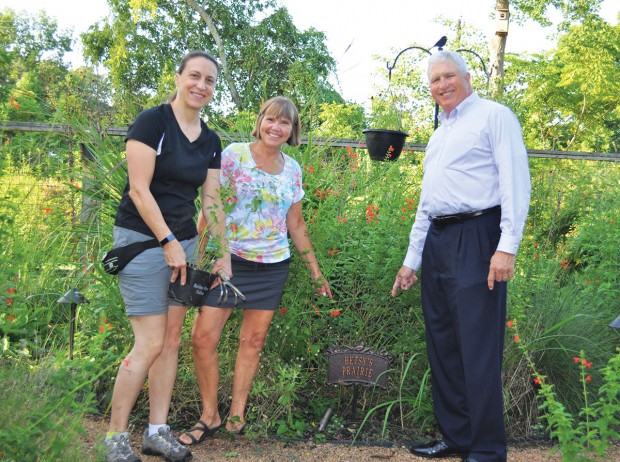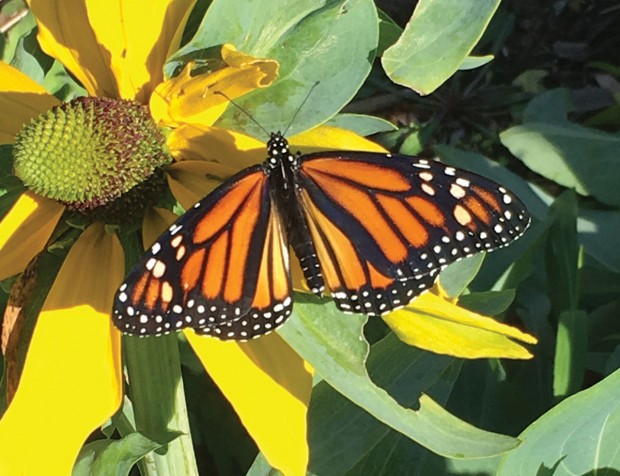Native Plants
Creating bird-friendly yards

In the same way that chess masters can play the game blindfolded, Betsy Black can rattle off the types of birds flying nearby without even getting a good look at them.
Betsy has been a bird enthusiast for more than 50 years. She started bird watching with her dad in her hometown of Chicago when she was 10 years old. Now, she enjoys observing birds and butterflies in her own Bellaire backyard, where she’s created a prairie with more than 25 different species of native plants – grasses, flowers and trees – that provide food and shelter for birds and butterflies.
“I get all the birds,” Betsy says, pointing toward a bird sitting on a power line that’s barely discernable to me in the distance. “Hawks, blue jays, owls. I had three [baby owls] and parents this year. I get munias, and they are not even supposed to be here.”
Betsy’s backyard prairie was recently recognized by the Houston Audubon Society, a nonprofit organization focusing on protecting natural environments for birds and people. “Betsy has taken all the steps to have a bird-friendly yard,” said Anna Vallery, Society conservation specialist. Betsy’s prairie has incorporated four main principles of being bird-friendly: native plants; inviting habitats such as two water features; no pesticides; and connection with others.
Betsy has met this last principle by sharing her enthusiasm with her neighbors. One neighbor, Charles Albright, was excited when he noticed native grasses growing in her backyard.
“I was walking my dog in the bayou behind Betsy’s house, and she has a welded fence similar to what I use with cattle in my ranch,” Charles said. “You can see through the fence, so I noticed her switchgrass growing. She walked out, and we got to talking about native grasses.”
Now, Betsy gives Charles Eastern gamagrass, the so-called “creamsicle for cows,” whenever she has extra. Charles takes the grasses to grow them out in his ranch in Lavaca County.
Meanwhile, Margarita Arentsen-Landgren, who lives across the street from Betsy, likes taking Betsy’s plants to her clients at homeless shelters. Margarita is a licensed clinical social worker and licensed chemical dependency counselor who works with Houston’s homeless population.
At two homeless shelters in Houston, Margarita used Betsy’s plants to create a garden that clients visit during therapy sessions. Betsy gave Margarita milkweed plants to attract monarch butterflies and pipevine, the host plant for swallowtail butterflies.
Clients “can see the metamorphosis from the caterpillar to the butterfly, and it helps with grief and loss,” Margarita says. “I also use it as an analogy for the therapy. When clients come in, I tell them they are caterpillars. They are learning to be in their body again. When they graduate, they fly away as butterflies.”
Betsy has enjoyed sharing her love of native plants and wildlife with neighbors. But, she says, native plants are still not commonplace in Houston homeowners’ gardens because people do not know the critical role these plants play in the ecosystem and prefer the appearance of manicured lawns.
“I don’t think people understand, native plants are made for floods or drought,” Betsy said. “The roots on these grasses go down three feet, so they’ll keep soaking up water. It’s unbelievable what they do.”
Although Betsy’s yard accumulated some water during Hurricane Harvey, her plants survived, since native plants can withstand droughts and floods. When CenterPoint Energy came out to check her gas meter after Harvey, she said, they commented that “nobody else’s yard looks like this. Everyone else’s looks dead.”
“And that’s why you should have native plants,” Betsy says. For those interested in starting a native plant garden, Betsy recommends the rudbeckia hirta (black-eyed Susan), a sunflower-like plant, as well as gaillardia (blanket flower). “These all attract butterflies and they are easy to grow,” she says.
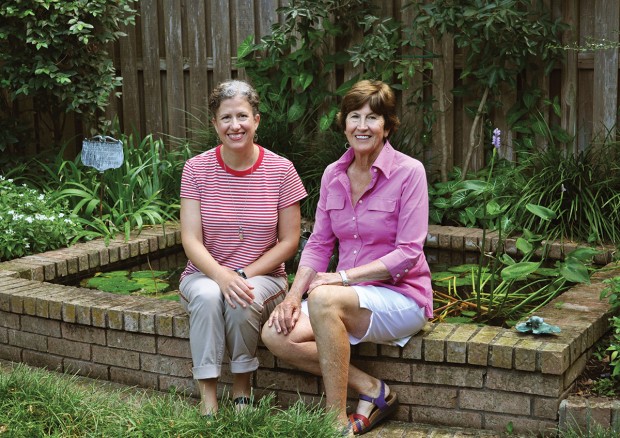
Daughter Sarah Flournoy (left) and mom Ruth Flournoy share a passion for wildlife. Both have replaced their St. Augustine lawns with native plants. (Photo: Pooja Salhotra)
Like Betsy, Sarah Flournoy, a West University resident and former English teacher at Episcopal High School, grows native plants in her yard. She’s also found that many neighbors have a misconception about what the ideal yard should look like.
“People think having a lawn is well-maintenance, but it’s not,” she said. “Think about the lawn crews that have to come in, the watering, the leaf blowers – it’s all very resource-intensive. I’m not saying native plants are maintenance-free, but they are much less resource-intensive. It’s kind of a shift in thinking.”
Sarah started learning about native plants and their relationship to birds when she served as executive director of the Nature Discovery Center in Bellaire. Spending time in the park made Sarah a “birder” and inspired her and her husband, Don Verser, to create a “living landscape” when they built their home two years ago. The home originally featured a traditional yard with St. Augustine grass, but they now have no lawn at all.
During spring-migration season this year, Sarah and Don enjoyed sitting outside observing flocks of warblers use their backyard water features. Sarah and Don keep a list of the birds they observe, consulting field guides they keep in their breakfast area to help identify any unknown creatures. “We know our local birds pretty well,” Sarah says. “But we’re still learning.”
Sarah credits her mother, Ruth Flournoy, for passing down her love of nature to her children. Ruth has loved gardens since she was a young girl. Then, Ruth would tell her parents, “you need to have prettier flowers in your yard.” As she grew older, that translated into a passion for conservation and wildlife. Ruth served on the national conservation committee of The Garden Club of America for eight years and served on the board of the Houston Arboretum & Nature Center for 15 years.
When she moved into her Tanglewood home 25 years ago, she knew she didn’t want her yard to be “your regular boring St. Augustine boxwood yard.” She hired a landscaping company that specialized in native plants.
“They instilled in me the idea that when you choose plants, they should be native and they should have some benefit for wildlife or the environment,” Ruth said. “At that point, I made up my mind that I wouldn’t just have ornamental plants. I’d have plants that are valuable for bees and birds and butterflies.”
Traditional plant stores do not always carry native plants, or the plants they call native may be native to Texas, but not specifically to Houston. “It’s getting more common, but it’s still difficult,” says Ruth, who finds many of hers at Buchanan’s Native Plants and Joshua’s Native Plants. “You have to have growers and then people who want to market the plants. If you don’t have people who appreciate them, then there’s no market because nobody can afford to sell them.”
Because native plants can become overgrown and eventually appear disorderly, they do require some maintenance. Ruth has found a team of landscapers who visit her yard about three times a year to pull out weeds, add compost and mulch and trim hedges.
“You have to have people who know what a native plant is. Otherwise you have people come in and think these plants are weeds.”
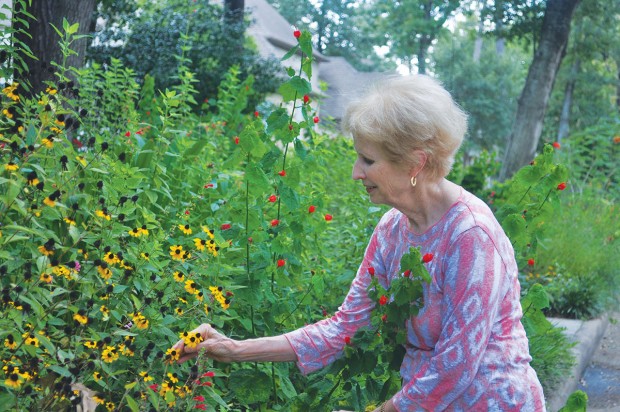
Claire Caudill’s front and back yards are filled with native plants, including this rudbeckia grandiflora. (Photo: Pooja Salhotra)
Now, Ruth says she’s part of a community of Houstonians who appreciate native plants and are passionate about conservation. One of those friends is Claire Caudill, whom she met through The Garden Club of America.
Like Ruth, Claire was sure she did not want St. Augustine grass when she moved into her home in Memorial. She hired Thompson’s Landscaping to remove the grass and replace it with native plants and now has Anderson Landscape help with cutting overgrown plants.
Claire’s passion for native plants grew after she read a book entitled Bringing Nature Home, written by Doug Tallamy, a professor in the Department of Entomology and Wildlife Ecology at the University of Delaware. The book explores the link between native plant species and native wildlife, arguing that native plants are critical to sustaining biodiversity. “It makes you see your yard not just as a decoration, but as a place where other things live and promote a healthy habitat,” Claire said. “Honestly, I drive down the street and look at the yards that are all grass and non-descript Asian plants, and I wonder how we have any birds at all.”
Claire emphasized the critical relationship between plants, insects and birds. The reason to go native, she says, is to provide food and shelter for the insects that in turn provide food for birds.

Claire Caudill’s yard includes a number of plants that attract butterflies, including this pipevine swallowtail.
“I think a lot of people think of insects as pests, but you have to have that insect population in order to have birds,” Claire says. “It’s the interdependence of different parts of nature that we need to be aware of.”
“I love the fact that my yard has butterflies all summer,” Claire says. “It just makes me happy.”
Editor’s note: To learn more about starting your own native plant garden, register to attend the Wildscape Workshop on Saturday, Oct. 26, 10 a.m.-12 p.m., at the Bellaire Nature Discovery Center, hosted by The Buzz Magazines. Native plant experts will share tips and tricks for making your yard bird- and butterfly-friendly. Register here.
Want more buzz like this? Sign up for our Morning Buzz emails.
To leave a comment, please log in or create an account with The Buzz Magazines, Disqus, Facebook, or Twitter. Or you may post as a guest.
